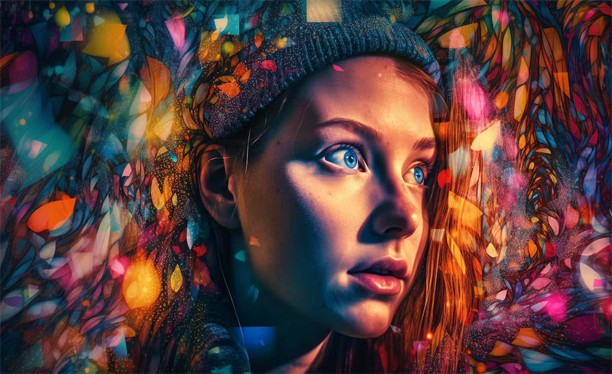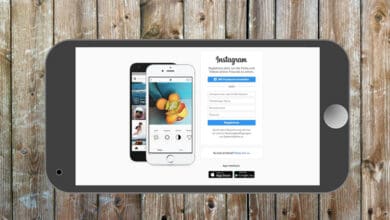
Generative AI Applications: The ChatGPT community is spread out in many different places. Midjourney is causing a lot of excitement among designers and artists. Relying on apps for daily tasks can be confusing. Like any other business, you must be amazed by artificial intelligence. But it can be overwhelming due to its fast pace. Generative AI, like Chatgpt and Midjourney, is a subset of technology worth mentioning. What if we told you you can make much money from generative AI applications? No, you don’t have to spend a lot of money. You need affordable AI development services that focus on customization.
Now, you might have another question in mind due to this idea. Generative AI applications refer to software or systems that use artificial intelligence techniques to create or generate new content, such as images, text, music, or videos. How do they work? How can you turn it into a business? Lots of companies are making millions from these apps. They automate tasks that people do on the internet every day. Yes, you guessed correctly. It allows people to write essays emails, generate images, and write code. Explore the popular uses of generative AI and join the trend. It will help you understand what works well for your business and what your users want. Let’s get started without wasting any more time!
- AI applications are growing quickly in different fields and industries.
- Smart algorithms and models are used to automate repetitive and routine tasks.
- Generative AI has many benefits, ranging from text generation to drug improvement.
- Generative AI is used in many industries to make operations smarter and faster.
- It’s essential to have a skilled team of developers and testers experienced in next-gen technology to make the most of generative AI applications.
How do Generative AI applications work?
Generative AI is about using clever algorithms to make new things. It’s like having a brain that’s a creative machine. There are different ways to make this work, such as using models like BERT, Transformer, or Autoregressive. The main stars are GANs and VAEs. Every good AI development company possesses one or both of these. Let’s simplify it by using an example of image generation.
Now, let’s discuss GANs. There are two essential parts: a generator and a discriminator. The generator learns from pictures and attempts to create new ones that resemble the training pictures. The discriminator is the expert at distinguishing real images from the fake ones created by the generator. These two train together using a method called adversarial training. It’s pretty cool! It’s like a game where the generator improves at creating images that deceive the discriminator. Over time, it enhances the performance of generative AI applications by creating highly realistic images.
VAEs, however, have some differences. They learn by mapping pictures from a large space to a smaller, hidden space and then reversing the process. During their training, they learn to analyze images and identify common details. Once VAEs have gained knowledge, they can generate new images that align with their learning.
GANs and VAEs are crucial for creating AI images. They are the essential elements for creating visuals automatically. And what they make is fantastic! They can create realistic pictures, enhance blurry ones, and generate images from spoken words. Check the table below for popular AI models for creating other cool AI projects. Now that we understand how this AI magic works let’s explore how people use it in the real world.
Top 10 Generative AI Applications
Here are ten popular applications of Generative AI to consider. Firstly, generative AI can be used in a wide range of categories. There are various types of generation, such as video, text, audio, and more. Depending on your business needs, you can create a new platform or add this capability to your existing one. Consider getting technology consulting services to help with this critical decision. This move will provide personalized tech guidance for your business. Now, let’s look at different categories of generative AI applications.
Visual Content Generation
Generative AI has become famous for creating images and videos. Artists, brands, students, and others use platforms like Midjourney to create and access graphics easily. Some examples of these use cases include:
Image Generation
Hey, have you heard of AI tools like Midjourney? They’re cool because they can generate images! Most of the time, they work like magic with text. Type your thoughts and watch as these tools transform them into visual representations. Now, GANs are used to achieve this. You can be very detailed in describing what you want, like the setting, the style, or anything you have in mind, and the AI will take care of the rest to create a realistic and impressive result.
Wait, there is more! In addition to the text-to-image trick, other AI helpers can improve existing pictures. They are like enhancement artists who can do many things, such as:
1. Image Enhancement
You will require experts familiar with variational autoencoders (VAEs) to use this generative AI application. This model can be used for image compression, denoising, and generating new images.
2. Semantic Image-to-Photo Translation
Have you ever transformed a doodle into an actual picture? It’s a type of translation called semantic image-to-photo. It’s like magic, turning a simple sketch or description into a realistic photo.
3. Improving Image Resolution
We all want a tool that can magically make a blurry picture clear. Image super-resolution is a technique that enhances the quality of an image. Adding extra pixels enhances the sharpness and detail of an image, regardless of whether it was captured using a regular camera or CCTV.
Video Generation
AI applications for video generation can handle tasks like video editing, adding effects, and creating animations, saving you from doing the tedious work. AI tools can create videos from scratch and improve existing ones by making them sharper and filling in missing parts, similar to how they work with images. They can also handle these tasks.
1. Video Prediction and Synthesis
AI can predict the future but create new frames that match perfectly with what’s happening. It helps users maintain smooth video flow and seamless transitions. It helps reduce video size or create lifelike virtual environments.
2. Video-to-Video Translation
This AI app can change video formats while keeping the content intact. AI can transform a daytime video into a nighttime version or alter the weather conditions, for example. These models are commonly used for video style transfer and video enhancement.
3. Video Animation and Deepfake Generation
Generative AI can assist users in making animations or deepfake videos by modifying the content of pre-existing videos. Deepfake videos are created using AI technology to replace faces, alter speech, and produce incredibly lifelike fake videos. This app is widespread and can be used for creative or controversial purposes. Using your platform ethically increases the likelihood of it going viral.
Audio Content Generation
Do you have a business related to audio or music? Want to go beyond autotune? If you’re interested in dubbing, music composing, or creating virtual assistants, generative AI can help you out.
1. Music Generation
AI applications that generate music have many benefits. They can create new music pieces. These tools can make new music by learning from existing music and creating original compositions for ads or other creative projects. Using copyrighted artwork in training data can still be problematic due to copyright infringement.
2. TTS (Text-to-Speech)
Have you heard AI speak? TTS (Text-to-Speech) AI gives words a voice. This tool makes your text sound authentic. Imagine AI actors who can effortlessly adapt their tone and style to suit any scene perfectly. They practice engaging in conversations and reading various texts to sound more human. Voice skills are helpful for gadgets, talking computers, and assisting people with special needs.
3. Translation or Speech-to-Speech
AI can create sounds and voices, not just talk. AI can use speech-to-speech (STS) conversion to make new voices from existing sounds. This AI application can change your voice like a superpower. It is ideal for gamers and movie professionals seeking fast voiceover solutions.
Text Generation
ChatGPT and other conversational AI systems have become very popular. It’s excellent for writing, talking, summarizing, translating, and more. These systems use large datasets to learn and create authentic content. NLP and NLU help understand prompts and provide intelligent responses. Here are a few examples of generative AI applications for text creation:
1. Blog/Essay Generation
Text generation using generative AI applications can create unique content for users. Whether it’s a school essay or a professional email, all you need is the prompt. The technology can understand details and situations with the help of prompts. It’s more than just basic information. Generative AI platforms can quickly create thought-provoking articles. It helps people save time when writing while still maintaining quality and coherence.
2. Chatbots and Virtual Assistants
Using generative AI in chatbots and virtual assistants enhances interactions with websites and apps. The game focuses on realistic conversations. Conversations can assist users by answering questions and providing helpful information with clarity.
3. Personalized marketing campaigns
AI is changing how marketing works. Marketers are creating personalized content for each consumer and developing focused campaigns. This generative AI application is perfect for you if you want to reach the large digital marketing market. Custom AI models enable you to provide personalized experiences. What is the result? Happy and satisfied users can improve their engagement and increase conversion rates.
Code Generation
Generative AI is gaining popularity in core software development. It’s an excellent tool for developers because it can code automatically! The only downside is that automatically generated code can have errors and vulnerabilities. But here is a chance for you to seize a business opportunity. Professional digital transformation services can help you create a platform that generates code precisely as the developer desires. It can save developers the time they would otherwise spend on writing, testing, and fixing code. AI models for code generation can handle tasks such as:
1. Code Completion
Imagine generative AI models, such as ChatGPT, as helpful tools for coding. They are smart enough to grasp the code’s context and propose the next steps. Completing a tricky code snippet could be your next big business idea.
2. Test Case Generation
AI models are also skilled at playing detective. Software testers create scenarios to test software and ensure it works correctly. It’s like having a virtual QA team to ensure everything functions perfectly.
3. Automated Bug Fixing
This one is also really cool. Do you know how spell check corrects your typos? Launching a code platform is quite simple. Users can input their code and let our platform handle the rest! It can find and solve problems, like a coding friend.
4. Model Integration
Generative AI has many impressive applications, one of which is its easy integration with machine learning. Integrating ML models can be complex for small to medium-scale businesses. You can provide a platform that makes this difficult task easy for them. It allows them to embrace technology without working late into the night.
5. New Drug Generation
One of the emerging uses of generative AI is the discovery of new drugs through technology testing. AI and machine learning algorithms are driving computer simulations that have the potential to transform various fields.
6. Drug Discovery and Design
Attention pharmaceutical industry professionals seeking a breakthrough: Look no further because this is it! AI models can help you discover and design drugs faster. It can help create new molecules that meet specific requirements and speed up finding potential drugs.
7. Compound Optimization
AI can help make medicines better and safer. It examines the interactions of small components in medications and proposes improvements to enhance their effectiveness.
8. Virtual Screening
AI can help predict how molecules and proteins interact through virtual screening. The process helps find possible drugs and makes choosing which ones to study easier.
3D Shape Generation
Another widespread use of generative AI is for creating 3D shapes. Investing in generative model creation allows you to provide your target audience with a tool for creating 3D shapes and models. Techniques such as VAEs, GANs, autoregressive models, and neural implicit fields are essential in this context.
This use case is great for manufacturing. Whether you serve automotive or textile companies, this tool will be unique. Make sure you choose a mobile app development company specializing in advanced technologies. You can easily do 3D tasks such as 3D printing, 3D scanning, and virtual reality.
Popular Industry-Specific Generative AI Applications
Here are some popular AI applications customized for specific industries. Many industries are moving towards automation. Naturally, they are incorporating generative AI into their operations. To understand how key players in different industries are adopting this subset of AI, Like Google, Adobe, IBM, Salesforce, Netflix, Uber, NVIDIA, Facebook, and Pinterest.
Entertainment
The media and entertainment industry is passionately adopting generative AI applications. Production houses are becoming more efficient using platforms like Midjourney and Adobe’s Creative Cloud Suite to automate manual tasks. It helps them create videos and generate songs automatically. Gaming studios use this technology to create new characters, storylines, and game levels. What else? Video production has reached new heights by creating user-friendly animations that enhance movies.
However, there is still untapped potential. Artists and entertainers want better tools to automate their repetitive tasks. If your business targets influencers, content creators, or people in the entertainment industry, launching a generative AI platform can give you a competitive advantage by making their daily tasks easier.
Manufacturing
AI applications in manufacturing have many benefits. Think of this technology as a helpful tool for people doing manufacturing tasks. The primary use case is for the production process, which has many benefits. When combined with IoT development services, this aspect of AI can greatly benefit manufacturing businesses. It can analyze data from quality check sensors. The evaluation is sent to the staff to check the quality. If not, they can halt the shipment and make the required adjustments.
In addition, generative AI can assist manufacturing businesses by providing new design suggestions. If someone owns a shoe business, generative AI can help them by automatically generating 3D models for their latest collection launch. But the AI magic doesn’t end there. It also includes robots and automation. Imagine robots that have mastered the art of efficient movement and handling objects. It ensures safety, speed, and efficiency, resulting in a smoother and accident-free manufacturing process.
Finance
Fintech companies can use various generative AI applications. Dealing with numbers all the time can take time and effort. This technology primarily helps in that area. Additionally, it helps make report generation faster and more efficient, preventing businesses from making mistakes.
Generative AI is similar to a highly skilled detective for bankers and traders. It can analyze many transactions and identify suspicious ones. It detects suspicious patterns and prevents fraudulent transactions. Additionally, it can assist them in finding all the information regarding credit scores. This information is valuable for those in fintech.
But it doesn’t end here. Imagine having an expert who knows precisely when and where to invest your money. Generative AI can help turn investments into revenue by providing helpful suggestions, managing risks and rewards, and navigating potential challenges. It’s like being a trading wizard. It enables you to make smart buying and selling decisions by analyzing past and current trends.
Healthcare
AI-based drug discovery is currently famous and generating a lot of excitement. But wait, there’s more! This technology goes beyond drugs. It’s like having a doctor who creates customized treatment plans for each patient. It thoroughly examines their medical history and symptoms to develop personalized plans that enhance recovery speed and ease.
Also, we should pay attention to medical imaging. Generative AI software enhances the quality of images from CT and MRI scanners, making them sharper and more precise. It’s like giving doctors a magnifying glass to help them see issues better and make more accurate diagnoses. Generative AI can help improve healthcare operations by finding cures, treating patients, and enhancing medical images. Stay hopeful for the future!
Real Estate
That’s correct. AI applications are being used in the real estate sector. Nowadays, people can predict the value of a property based on factors like its location, size, and condition. This feature is like a superpower for real estate professionals and investors. AI can now assess property values quickly and accurately.
When it comes to customized software, you can assist users in personalizing their property recommendations according to their preferences. If you want to serve architects and builders, you can provide them with software that allows them to create designs based on their ideas quickly. There are countless possibilities here. Bring your idea and use generative AI to transform the real estate industry.
Retail and e-Commerce
Generative AI applications are driving significant progress in the retail industry. Using data-driven insights, it brings product design to life. It creates different options that match current market trends and what consumers like. Technology goes beyond design and also brings personalization. It can customize display options based on personal preferences, making the experience more immersive and enjoyable.
FAQ
1. How much does it cost to create a Generative AI App?
The cost of building a Generative AI App can vary greatly, from thousands to millions of dollars. It depends on complexity, data requirements, and available development resources.
2. How much time is needed to create a Generative AI App?
Creating a Generative AI App usually takes a few months to a year, depending on the project’s size and available resources.
3. What apps can be made with Generative AI?
Generative AI is a powerful tool to create art, text, music, design, and more content. It enhances creative and automation applications.
4. How do I pick the best Generative AI model for my application?
When selecting a Generative AI model, consider the task complexity, available data, and hardware. Begin with well-known models such as GPT-3 or models designed for specific purposes.
5. Are Generative AI applications compatible with existing systems?
Generative AI applications can easily be added to existing systems using APIs or custom development. This integration improves functionality and automation.
Final Words
In today’s tech era, we’re all about embracing generative AI. Some businesses are surprised, while others work hard to incorporate it into their operations to make a lot of money. Early adopters will receive the most benefits. It is because technology is advancing quickly. To stay resilient, you need a software development partner who is progressive. We hope this guide has given you insights into the Generative AI app and how it transforms the digital landscape.



